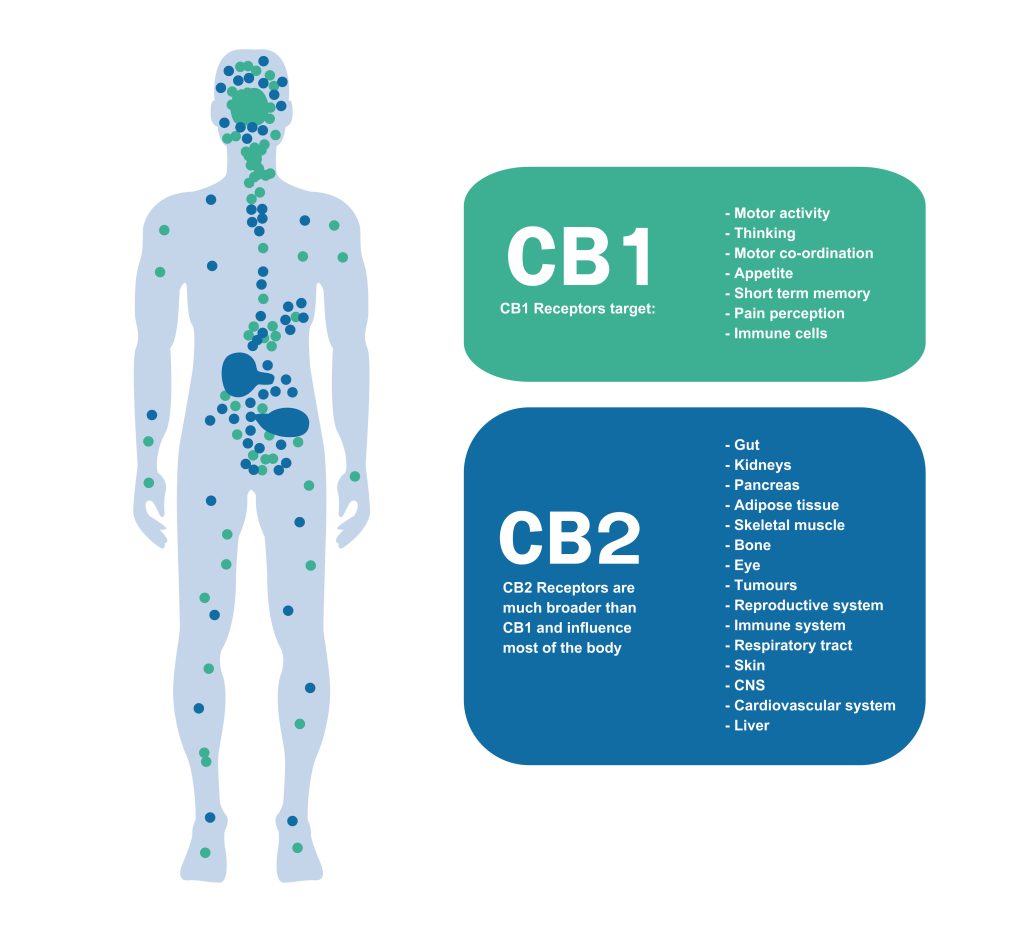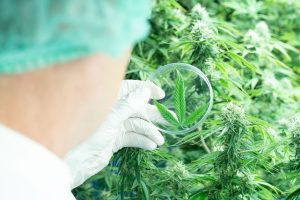At Peake ReLeaf, we are committed to promoting cannabis education and helping our community navigate the exciting world of cannabis. Understanding the science behind the amazing interactions that occur between cannabis and the human body can greatly enhance your experience and appreciation of this remarkable plant. In this blog, we’re diving deep into the fascinating realm of cannabinoid receptors – the essential pathways responsible for every cannabis experience.
So, fasten your seat belts, Peakestronauts, as we embark on an enthralling journey into the inner workings of your body!
Breaking Down The Endocannabinoid System
The endocannabinoid system (ECS) is a complex organization that exists in your body and interacts with. “Endo” means “within” the body, which means that whether or not you use cannabis, your ECS is alive and kicking.
That’s because our bodies naturally produce endocannabinoids, our own internal cannabinoids, that activate the ECS. Therefore, when you consume cannabis, you introduce extra cannabinoids into your body that assist with stimulating the ECS.
The ECS does more than you might think. It takes charge of maintaining ‘homeostasis,’ ensuring your body stays balanced and stable. Homeostasis includes hunger, mood, anxiety, learning and memory, pain, reproduction, metabolism, growth, and development.
It’s a lot to cover! However, because the ECS influences so many functions, that’s why the use of cannabis can have so many potential effects on the body.
Cannabinoid Receptors: Types & Functions
A system similar to the ECS you might be familiar with is the nervous system. Just like neurotransmitters bind to receptors, endocannabinoids and cannabinoids bind to, you guessed it, cannabinoid receptors.
There are two types of cannabinoid receptors: CB1 and CB2. CB1 receptors mainly hang out in our brain and nervous system in areas that control our mood, memory, and even how we feel pain. CB2 receptors are found in various places, especially in our immune cells, which travel throughout our body. You can think of them as little health detectives roaming around, looking for ways to keep our bodies in balance.

Imagine CB1 receptors as little control knobs. When we introduce cannabis into our system, it essentially turns these ‘knobs’, influencing our feelings, thoughts and memory. They can make us feel more relaxed or alter our perception of pain.
CB2 receptors are like mediators in our body. The interaction between cannabis and these receptors potentially contributes to reduced inflammation and pain. This effect has prompted further investigation into its potential use for conditions such as arthritis and other inflammatory diseases.
Both CB1 and CB2 receptors have unique roles, but they’re like partners in maintaining our body’s balance. By understanding how they work, we can better appreciate why cannabis affects us the way it does and why it holds potential for various medical treatments.
Cannabinoids & Cannabinoid Receptors in Action
Now that we’ve covered cannabinoids and the ECS and its cannabinoid receptors, let’s talk about what happens when the two interact.
First, let’s talk THC (Tetrahydrocannabinol). THC demonstrates a particular affinity for CB1 receptors, which are prominently located within the brain. When THC binds with these receptors, it can instigate changes in your perceptions and induce sensations of relaxation.
This interaction accounts for the sense of euphoria or feeling ‘high’ that can occur following the use of cannabis containing THC. THC also engages with CB2 receptors, albeit in a less dramatic manner, which may influence various body functions.
CBD (Cannabidiol) exhibits a unique behavior in comparison to THC. It does not bind directly with either CB1 or CB2 receptors. Instead, it modulates their ability to bind to other compounds, potentially tempering the effects of THC. This interaction influences the overall effect of cannabinoids on the body.
To continue the Cannabinoid Conversation, be sure to check out our helpful YouTube Playlist on the topic!
Peake ReLeaf Adult Use & Medical Cannabis Dispensary – Helping Maryland Harness the Power of Cannabis
Overall, more research needs to be done. However, there’s no denying the power of the ECS and the cannabinoid receptors that keep our bodies in check all day, every day. As science advances and we learn more, we can harness the potential benefits of cannabis and understand how it can be integrated into our lives for better health and well-being.
Interested in learning more about cannabis? Check out our FREE medical cannabis courses here!
Before your next visit to our dispensary, be sure to peruse our online menus:
*The contents of this blog are intended for informational purposes only. Always seek the advice of a physician or other qualified healthcare provider with any questions you may have regarding a medical condition.*






